Off-grid camping is the ultimate escape, offering a chance to unplug from modern distractions and immerse yourself in nature. But staying powered off-grid doesn’t mean giving up the conveniences of lights, charged devices, or a comfortable camp setup. With innovative tent modifications and sustainable power solutions, you can enjoy the freedom of remote camping while keeping your essentials powered.
This guide shares 11 practical tent ideas to help you stay powered off-grid, using solar energy, portable batteries, and energy-efficient gear. Perfect for backpackers, car campers, or overlanders, these tips ensure you have reliable power without sacrificing the minimalist spirit of off-grid living. Plus, we’ve included a detailed FAQ section to answer common questions about off-grid power solutions. Let’s get started!
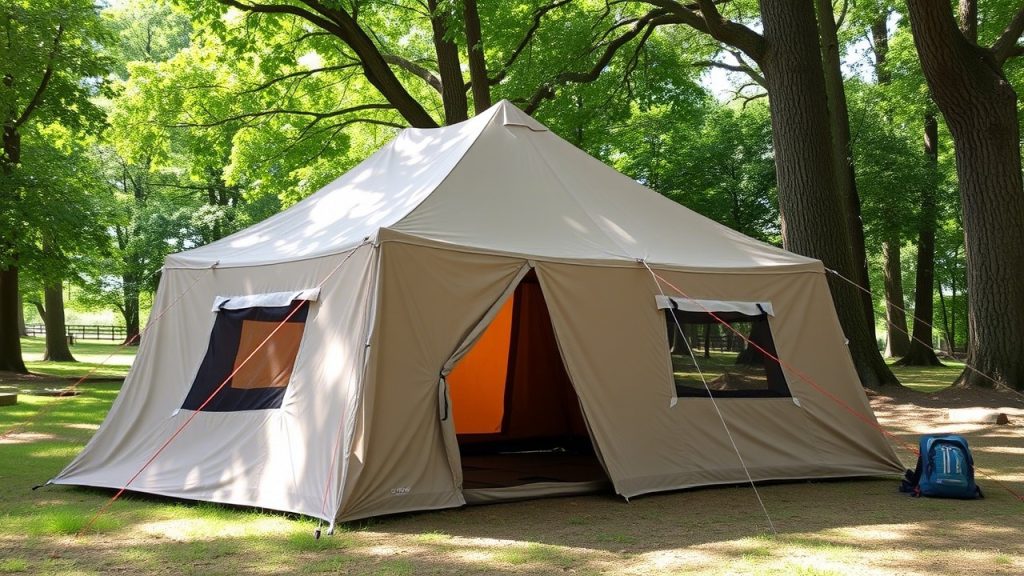
Why Off-Grid Power Matters for Camping
When camping off-grid, you’re far from electrical outlets, relying entirely on your own resources. A dependable power source enhances comfort, safety, and functionality—whether it’s charging a phone for navigation, powering a lantern for nighttime tasks, or running a fan to stay cool. Traditional options like gas generators are bulky, noisy, and environmentally harmful.
Modern off-grid power solutions, such as solar panels and portable power stations, are lightweight, quiet, and sustainable. The ideas below combine tent setups, gear choices, and power management strategies to keep your camp powered efficiently, letting you focus on enjoying the wilderness.
11 Best Tent Ideas to Stay Powered Off-Grid

1. Equip Your Tent with Flexible Solar Panels
Attaching lightweight, flexible solar panels to your tent is a seamless way to harness solar energy for off-grid power.
How to Do It:
- Purchase flexible solar panels like the BougeRV 100W CIGS Thin-Film Solar Panel, which are lightweight and durable.
- Secure the panels to your tent’s rainfly or roof using Velcro strips, clips, or adhesive mounts, ensuring they face the sun.
- Connect the panels to a portable power bank (e.g., Anker PowerCore 26800mAh) or a small power station for energy storage.
Why It Works:
Flexible solar panels provide a renewable energy source directly integrated with your tent, ideal for charging small devices like phones or headlamps during sunny days.
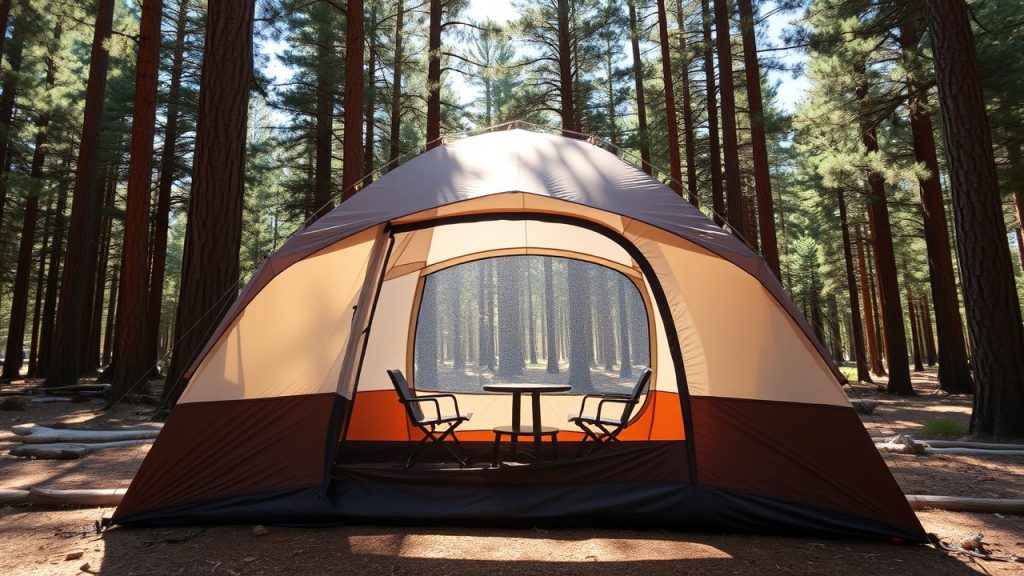
2. Use a Portable Solar Generator
A portable solar generator combines solar panels with a battery pack, creating a versatile power hub for off-grid camping.
How to Do It:
- Invest in a compact solar generator like the Jackery Explorer 500 (518Wh) paired with a foldable 100W solar panel.
- Place the solar panel outside your tent, angled toward the sun, and store the generator inside or in a vestibule for easy access.
- Use the generator’s AC, DC, or USB ports to power devices like laptops, lights, or fans.
Why It Works:
Solar generators store energy for use day or night, ensuring reliable power even during cloudy weather or after sunset.
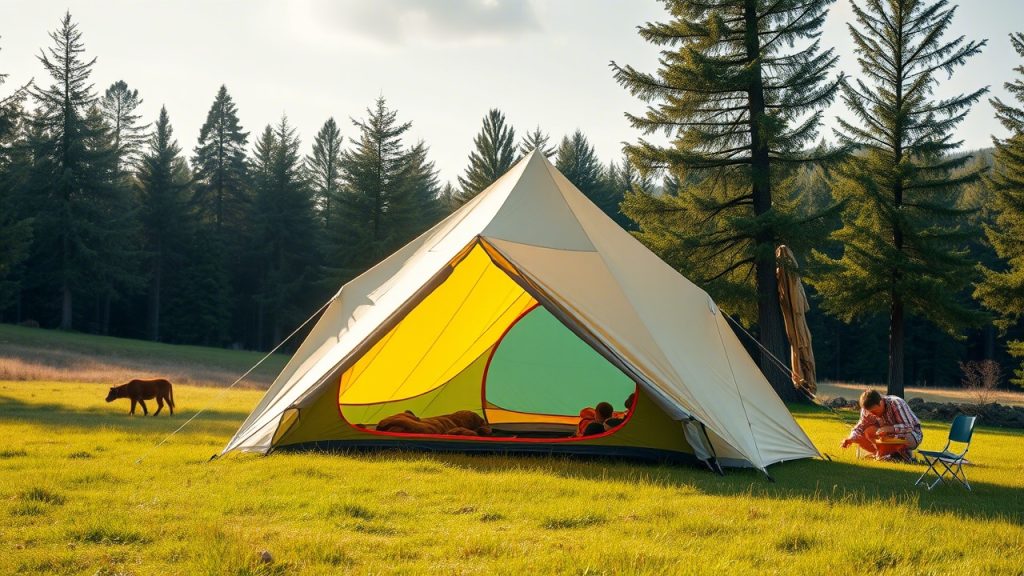
3. Choose a Rooftop Tent with Solar Compatibility
Rooftop tents mounted on vehicles are perfect for overlanders, and many support solar power setups for off-grid adventures.
How to Do It:
- Select a rooftop tent like the Thule Tepui Foothill, which pairs well with vehicle roof racks that can hold solar panels.
- Mount a lightweight solar panel (e.g., Renogy 100W Flexible Solar Panel) on the vehicle’s roof and connect it to a power station (e.g., EcoFlow River 2, 256Wh) stored in the vehicle.
- Run a weatherproof cable from the power station to the tent for charging devices or powering lights.
Why It Works:
Rooftop tents combine mobility with vehicle-based power, making them ideal for remote campsites where solar energy is your primary source.
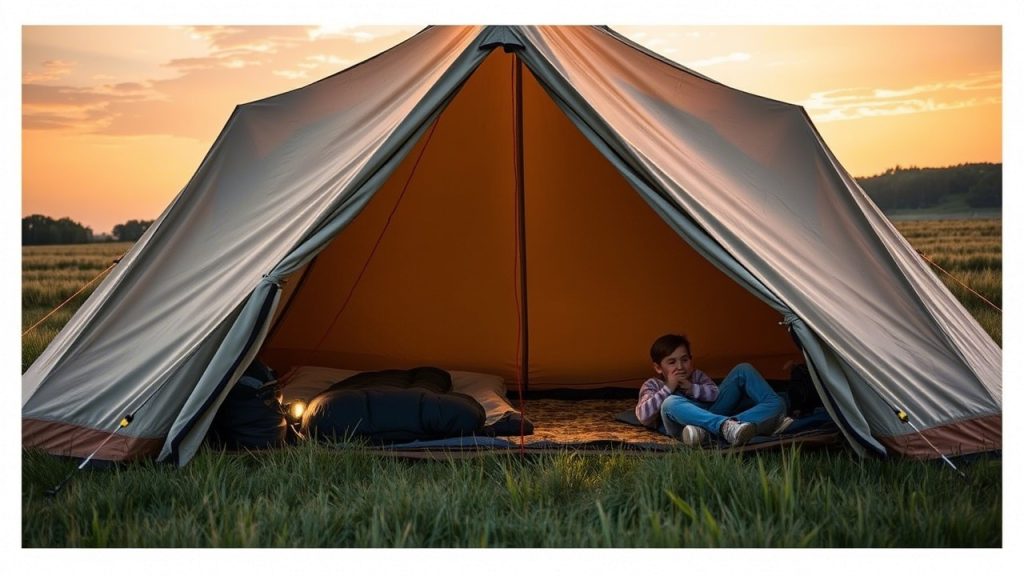
4. Install Solar-Powered LED Lighting
Energy-efficient LED lights paired with solar power illuminate your tent without draining batteries, enhancing nighttime comfort.
How to Do It:
- Buy solar-powered camping lanterns like the MPOWERD Luci Solar String Lights, which charge via a built-in solar panel.
- Hang the lights inside the tent using gear lofts or carabiners, or drape them outside during the day to charge.
- Choose lights with dimmable settings to conserve energy for longer use.
Why It Works:
Solar LED lights provide bright, long-lasting illumination with minimal power consumption, perfect for off-grid campsites.
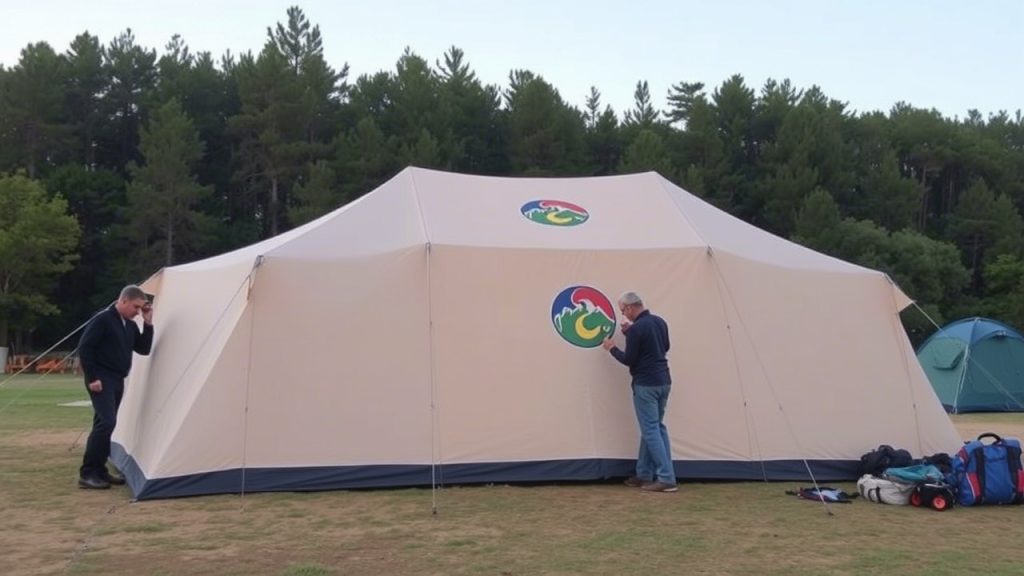
5. Carry a Solar-Charging Power Bank
A solar-charging power bank is a compact, portable solution for keeping small devices powered in remote locations.
How to Do It:
- Select a rugged power bank like the Goal Zero Venture 35, which supports solar charging with a compatible panel (e.g., Goal Zero Nomad 10).
- Charge the power bank during the day by attaching it to a small solar panel clipped to your backpack or tent.
- Store the power bank in a tent pocket for quick access to charge phones, GPS units, or cameras.
Why It Works:
Solar power banks are lightweight and ideal for minimalist campers who need to keep essentials charged without bulky gear.
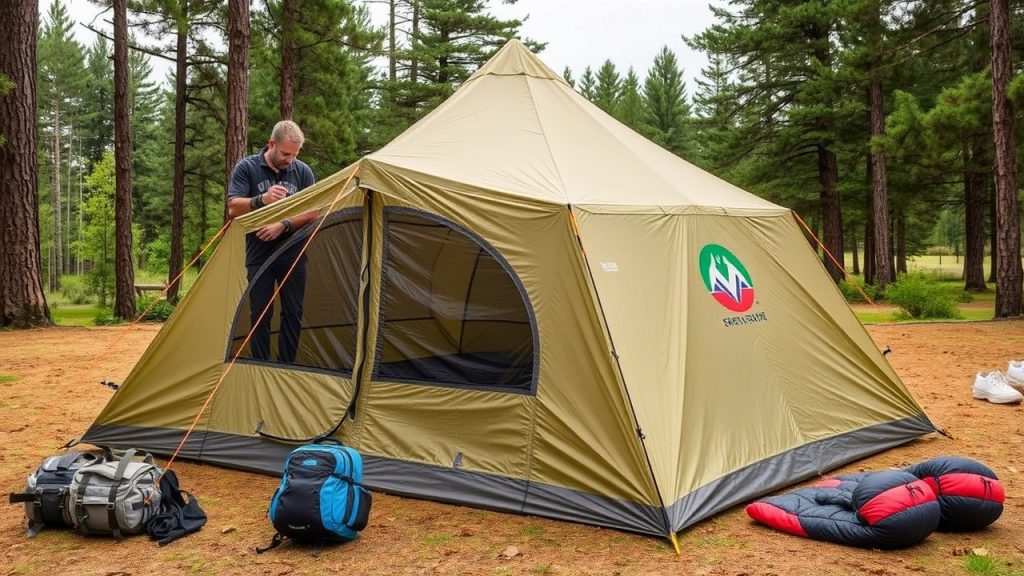
6. Add a Solar Shower for Warm Water
A solar shower uses the sun’s heat to provide warm water for bathing or cooking, adding comfort to off-grid camping.
How to Do It:
- Purchase a solar shower bag like the Advanced Elements 5-Gallon Solar Shower, which heats water using sunlight.
- Hang the bag on a tree or tent pole during the day to warm, and use it in a privacy shelter or open area near your tent.
- Pair with a USB-powered pump (charged via solar) for easier water flow if needed.
Why It Works:
Solar showers deliver warm water without electricity, enhancing hygiene and comfort in remote settings.

7. Select a Tent with a Power Port
Tents with power ports allow you to run cables from external power sources, like solar generators or vehicle batteries, into the tent.
How to Do It:
- Choose a tent like the Kelty Wireless 6, which includes a power port for cable management.
- Position a solar generator or vehicle battery outside the tent and run a cable through the port to power devices inside.
- Ensure the port has a waterproof cover to prevent leaks during rain.
Why It Works:
Power ports keep cables organized and protected, simplifying power access while maintaining the tent’s weatherproofing.
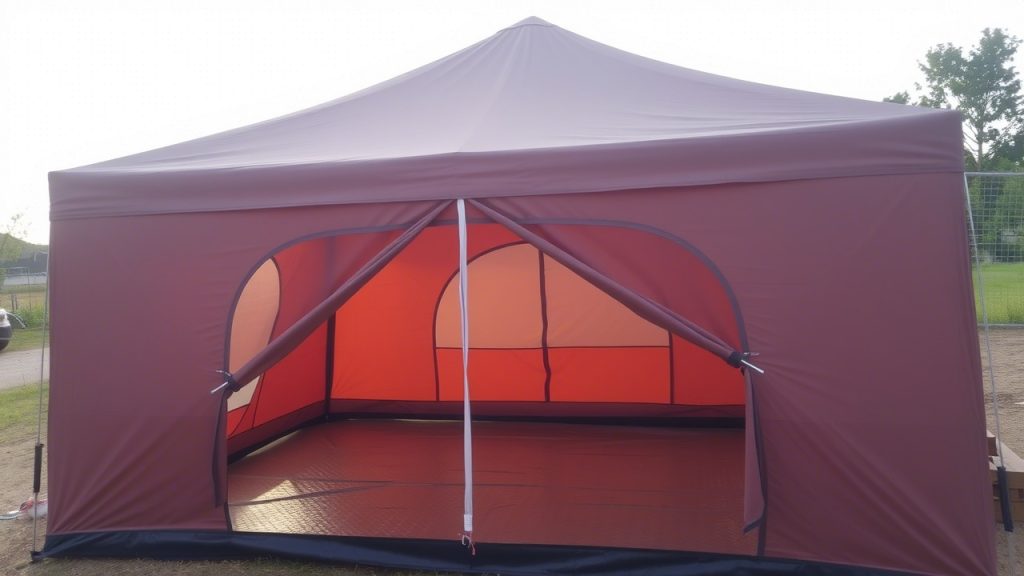
8. Use Energy-Efficient USB Fans
Battery-powered or solar-charged USB fans keep your tent cool and well-ventilated, especially in hot or humid climates.
How to Do It:
- Buy a USB-powered fan like the JISULIFE Portable Camping Fan, rechargeable via a solar power bank.
- Hang the fan from the tent’s gear loft or place it on the floor to circulate air, using it sparingly to conserve power.
- Charge the fan during the day to ensure it’s ready for nighttime use.
Why It Works:
Energy-efficient fans improve tent comfort with minimal power draw, making them a practical addition to off-grid setups.
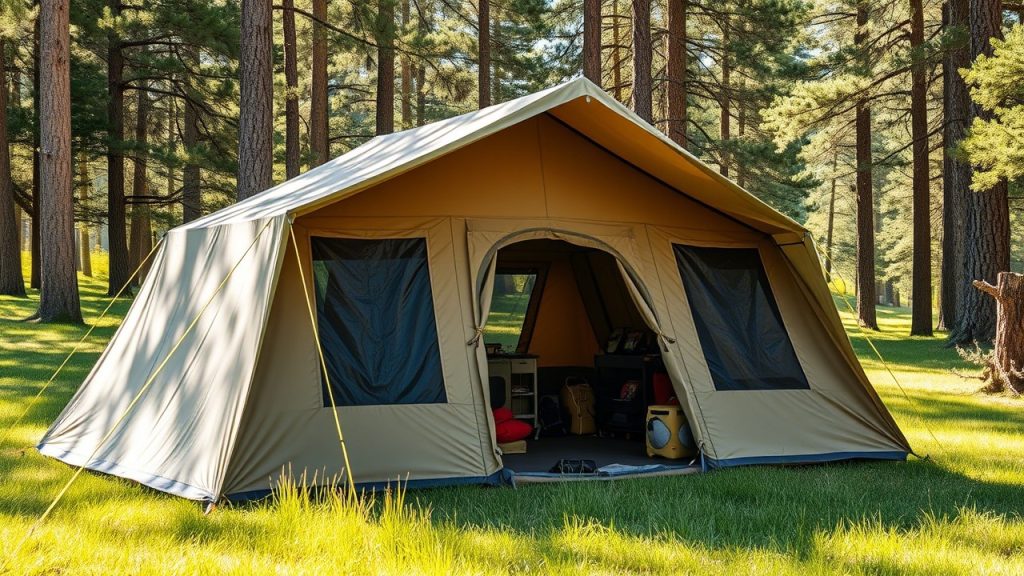
9. Create a Solar-Powered Charging Station
A dedicated charging station inside your tent organizes devices and ensures they stay powered, streamlining your off-grid camp.
How to Do It:
- Use a compact power station like the Anker 535 PowerHouse (512Wh) as the hub, placed in a dry corner of the tent.
- Attach a multi-port USB charger to power multiple devices (phones, headlamps, cameras) simultaneously.
- Secure cables with clips or store them in a gear loft to keep the station tidy.
Why It Works:
A charging station centralizes power management, keeping your devices charged and your tent clutter-free.
10. Pair Your Tent with a Vehicle Power Inverter
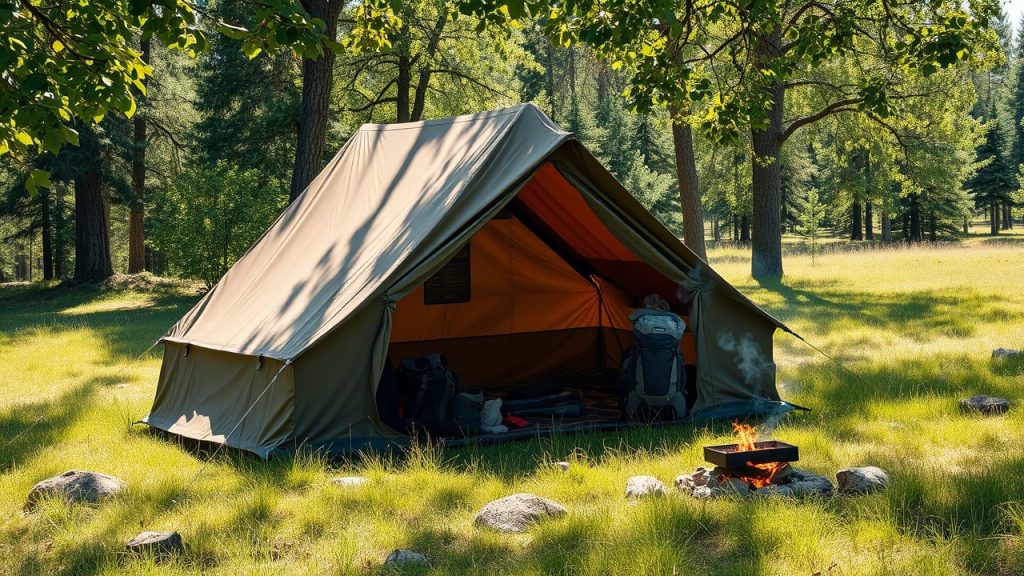
For car campers, a vehicle power inverter turns your car’s battery into a power source for tent-based devices.
How to Do It:
- Install a power inverter like the BESTEK 300W in your vehicle, connected to the car battery.
- Run a weatherproof extension cord from the inverter to your tent to power low-wattage devices like LED lights or a small fan.
- Use a solar panel to recharge the car battery during the day to prevent draining.
Why It Works:
A vehicle inverter provides a reliable backup power source, complementing solar solutions for longer off-grid trips.
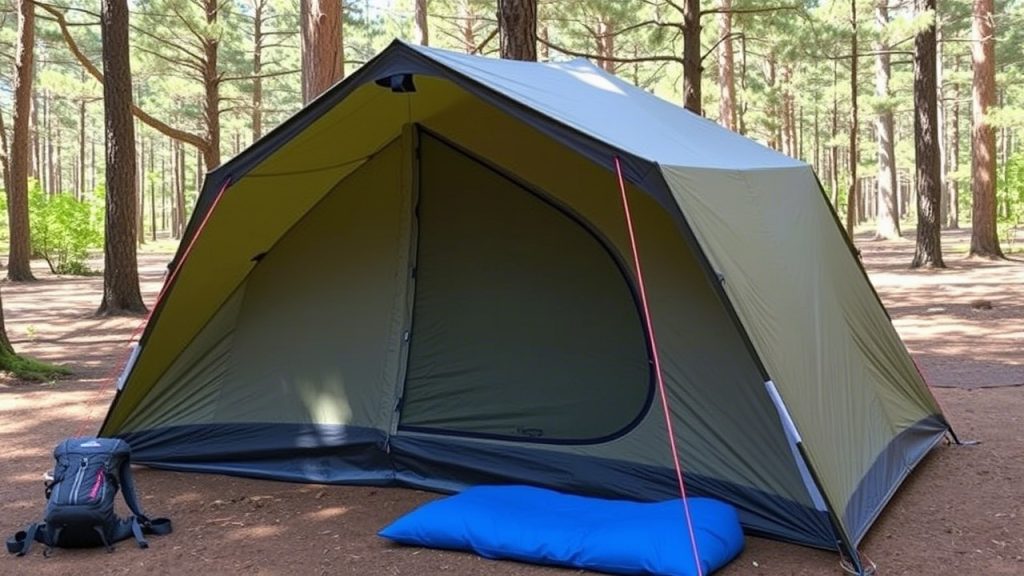
11. Opt for a Canvas Bell Tent with a Stove Jack
A canvas bell tent with a stove jack allows you to use a wood stove for heat and cooking, reducing reliance on electrical power.
How to Do It:
- Choose a tent like the WhiteDuck Regatta Canvas Bell Tent, which includes a stove jack for safe indoor stove use.
- Install a portable wood stove (e.g., Winnerwell Nomad Small) for warmth and cooking, using locally sourced firewood.
- Supplement with solar-powered lights and a power bank for minimal electrical needs.
Why It Works:
A wood stove provides sustainable heat and cooking capabilities, minimizing the need for battery-powered devices and enhancing off-grid self-sufficiency.
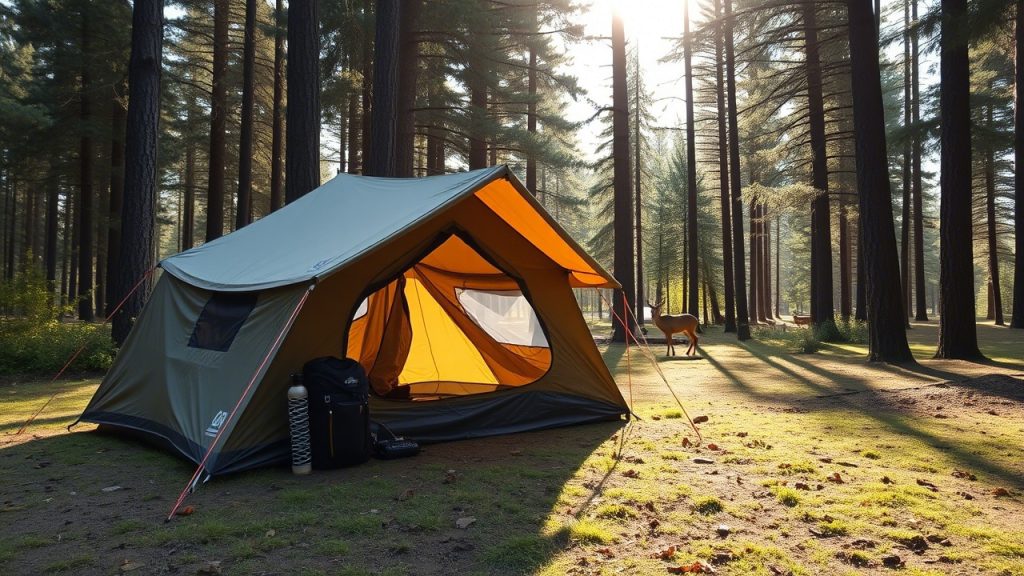
Bonus Tips for Off-Grid Power Management
- Prioritize Low-Power Devices: Choose LED lights, USB fans, and low-wattage chargers to maximize battery life.
- Track Energy Use: Use a power station with a digital display to monitor consumption and avoid overuse.
- Optimize Solar Exposure: Position solar panels in direct sunlight and adjust their angle throughout the day for maximum efficiency.
- Prepare for Cloudy Days: Bring a fully charged power bank or extra batteries as a backup for low-sunlight conditions.
- Test Your Gear: Set up your power system at home to ensure all components work together before your trip.
9 Frequently Asked Questions About Off-Grid Tent Power
1. What’s the best way to power a tent off-grid?
Solar power, using flexible panels and portable power stations, is the most sustainable and practical option. Vehicle inverters or wood stoves can serve as backups, depending on your camping style.
2. How much solar power do I need for a tent?
For basic needs (phone charging, lights, small fan), a 50-100W solar panel and a 256-512Wh power station are sufficient. For larger devices, opt for a 200W panel and 600Wh+ capacity.
3. Are flexible solar panels durable enough for camping?
Yes, flexible panels like the BougeRV CIGS are designed for outdoor use, with weather-resistant coatings and lightweight construction. Handle them carefully to avoid bending or scratching.
4. How do I protect my power station from moisture in a tent?
Store the power station in a dry, ventilated corner of the tent, ideally in a waterproof bag or case. Ensure the tent’s floor is protected with a footprint to prevent ground moisture.
5. Can I rely on a car battery to power my tent?
Yes, a car battery with a power inverter can power low-wattage devices. Use a solar panel to recharge the battery during the day, and avoid running high-power devices to prevent draining.
6. How do I manage condensation with fans in a tent?
Use a USB fan to improve airflow, and choose a tent with ample mesh panels and vents (e.g., REI Co-op Half Dome SL 2+). Pitch in an open area to enhance ventilation and reduce moisture buildup.
7. Are canvas bell tents practical for off-grid power?
Yes, canvas bell tents with stove jacks, like the WhiteDuck Regatta, are excellent for off-grid camping. A wood stove provides heat and cooking, reducing reliance on electrical power.
8. How long will a power station last off-grid?
A 512Wh power station can charge a smartphone (20Wh) about 25 times or run a 5W LED light for 100 hours. Actual duration depends on device wattage and usage patterns.
9. What if it’s cloudy during my off-grid trip?
Bring a fully charged power bank or power station as a backup. Conserve energy by using devices sparingly and rely on non-electric solutions like a wood stove for heat or cooking.
Conclusion
Staying powered off-grid is easier than ever with the right tent setup and power solutions. These 11 tent ideas—from flexible solar panels to canvas bell tents with wood stoves—offer practical, sustainable ways to keep your camp powered and comfortable in the wilderness. Whether you’re a minimalist backpacker or a car camper seeking luxury, these strategies ensure you have the energy you need for lights, devices, and ventilation without relying on noisy generators or grid power.
By implementing these tips, you’ll enjoy the freedom of off-grid camping with the confidence that your essentials are powered. Pack your tent, charge your gear, and embrace the adventure of living off-grid!
Happy camping!





